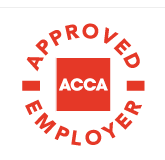Pension
What should I consider when making a pension contribution?
Annual Allowance
There is a limit to the amount that can be contributed to your pension each year while still receiving tax relief. This limit is known as the ‘Annual Allowance’ and is capped at £40,000. The annual allowance applies to all schemes you belong to and includes all of the contributions that you or your employer pay or anyone else who pays on your behalf.
The Tapered Annual Allowance
For high earners, you should be aware of the tapered annual allowance that came into effect as of 6th April 2016. This will apply if both the following are met:
- Your ‘threshold income’ is over £110,000 (this is your income excluding any pension contributions)
- Your ‘adjusted income’ is over £150,000 (this is your income added to any pension contributions you or your employer make)
£1 of annual allowance will be lost for every £2 of income over £150,000 per tax year. This means if your ‘adjusted income’ is over £210,000, your annual allowance is capped at £10,000.
Making use of prior years’ unused allowances
If you have not made any pension contributions in the previous three tax years, you will be able to benefit from the carry forward of these unused allowances to enable you to receive tax relief on a larger pension contribution, provided that you were a member of a registered pension scheme during this period. You can then do so once you’ve made full use of the current year’s annual allowance.
Annual Allowance Tax Charge
If you exceed the annual allowance in a year, you will be faced with an annual allowance tax charge and will not receive tax relief on any contributions you have paid that exceed the limit. This will need to be declared on the ‘Pension savings tax charges’ section of your self-assessment tax return and income tax will be payable at your highest rate of tax.
Lifetime Allowance
There is a limit on the value of payouts from your pension schemes that can be made without triggering an extra tax charge. The lifetime allowance is £1,030,000 in the tax year 2018/19. If the cumulative value of the payouts from your pension pot exceeds the lifetime allowance there will be tax due on the excess. Any amount over your lifetime allowance that you take as a lump sum is taxed at 55%. Any amount over your lifetime allowance that you take as a regular retirement income attracts a lifetime allowance charge of 25%.
For more information or to discuss this further, do not hesitate to get in contact with us.

You may also like…
Personal saving allowance
60% pensions relief
What are self-assessment tax returns
Undeclared rental income
R&D tax credits







